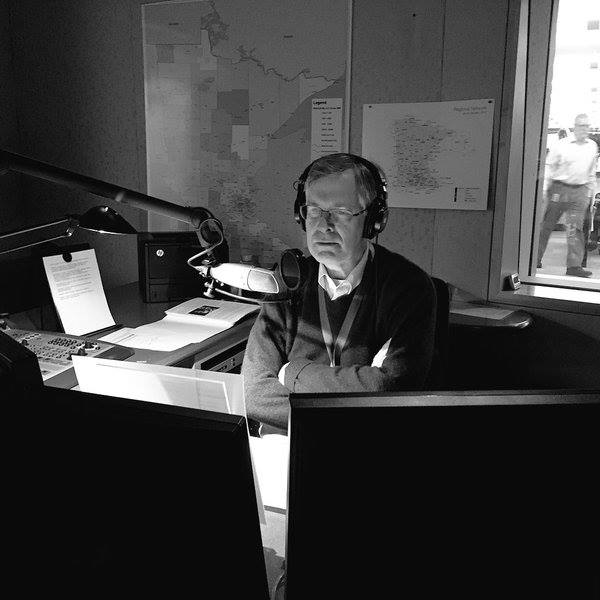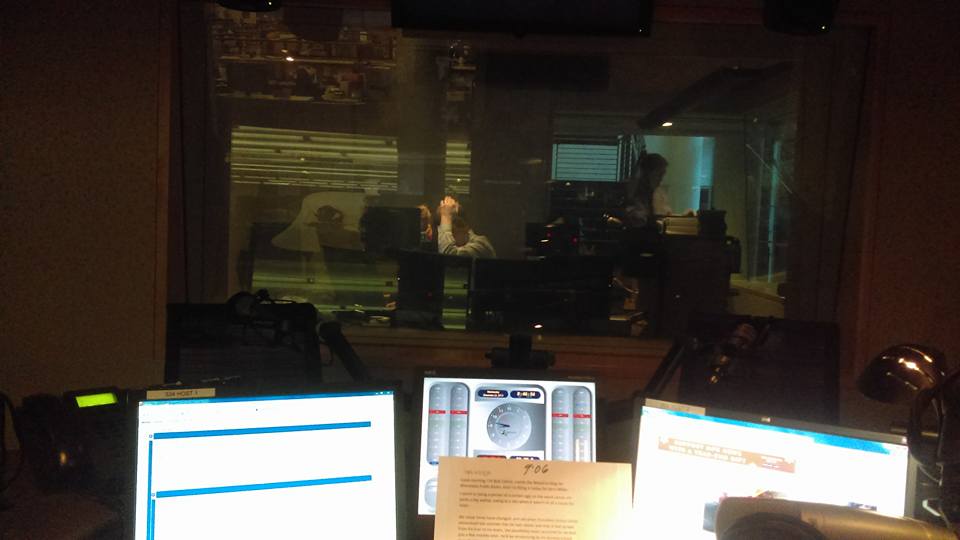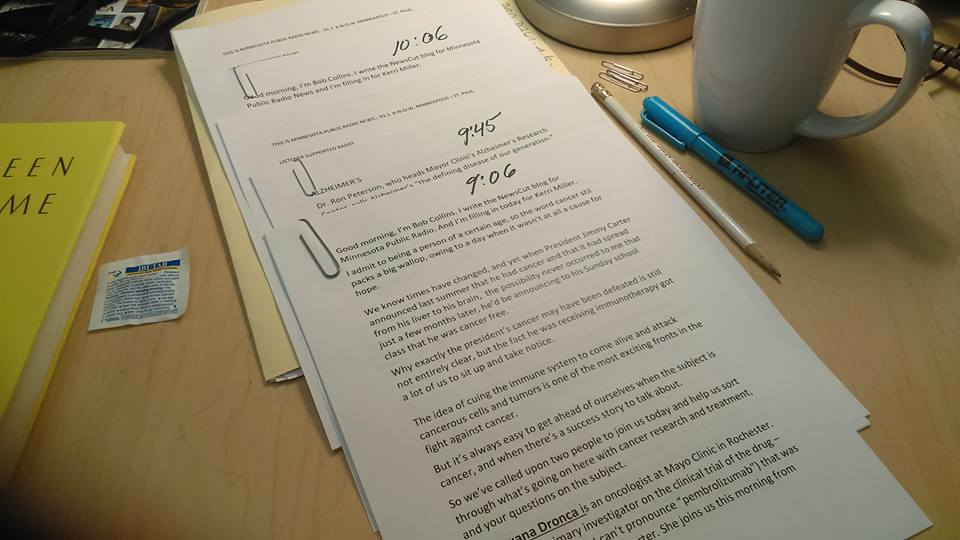When I started NewsCut eight years ago this month, one of the things I wanted to do was provide the occasional behind-the-scenes look at MPR News, an area most people never get to see unless you take one of my patented two-hour in-person tours.
I never got around to it (except for this one) but being called out of radio talk-show retirement in the last couple of weeks to fill in for Kerri Miller reminded me again that radio is an iceberg, most of which lay beneath the surface.
This is what you see if you’re the person you hear on MPR News, however.
In that space beyond the studio are three producers and one technical director, who are the people who do much of the work of providing what you hear out of the radio.
I take nothing away from the excellent show hosts at MPR News. They make things sound as if anybody could do what they do, a clear sign that anybody can’t. But, they get plenty of attention.
Let’s talk about those people in the other room instead. In the shows I’ve hosted, there are usually four segments, including one “in depth” section each hour. The host doesn’t assemble things; the producer does. Once armed with a topic, they search for the perfect guests, contacting and cajoling them to agree to appear on the radio. They book remote studio time or satellite or Skype time (we had a guest from Kabul last week, for example), and prepare background for the show host to use in establishing a script to guide him/her through the hour.
Near show time, they hold the hands of nervous guests and tell them it’s going to be OK. Then, working without a net, they skillfully and professionally maneuver all of us through the hour. They answer the phones from people who want to ask questions. Sometimes the questions fit perfectly; sometimes they don’t.
It’s no fun telling someone they won’t get on the air. And yet they do it consistently with grace, while still conducting the orchestra in which the instruments are a host, guests, callers, newscasters, underwriting announcements, and the occasional problem that can sink it all in seconds. They have a clock that must be served. The clock isn’t flexible; 10:00:00 doesn’t mean 10:00:01.
If you’ve ever walked to the very edge of the Grand Canyon and had that feeling as you thought — even if only for a second — what would it would be like to lose your balance, you know what being a producer is like.
If the producer is the conductor, the technical director is the first chair, seamlessly juggling an endless number of tasks at the direction of the producer. Hosts don’t push buttons. They sit, think deep thoughts, ask questions, and — if you haven’t done live talk radio in a few decades — spend ridiculous amounts of energy trying to avoid throwing up. Easy.

Blogging for a living is honest work, to be sure. But it’s also solitary work, especially if you like to work the very edges of the news agenda, as I do. Returning to radio for a couple of weeks was a great reminder of why I got into it in the first place.
It’s a symphony of teamwork and talent by people who seem to be quite delighted not to be recognized in the public sphere. For a host, it’s time well spent watching them work and thinking that if you had a career to live all over again, next time you’d be just like them.
Their names are Jeff Jones, Sam Choo, Madelyn Mahon, Marcheta Fornoff, Stephanie Curtis, Corey Schreppel, and Erik Stromstad.
I miss them already.


